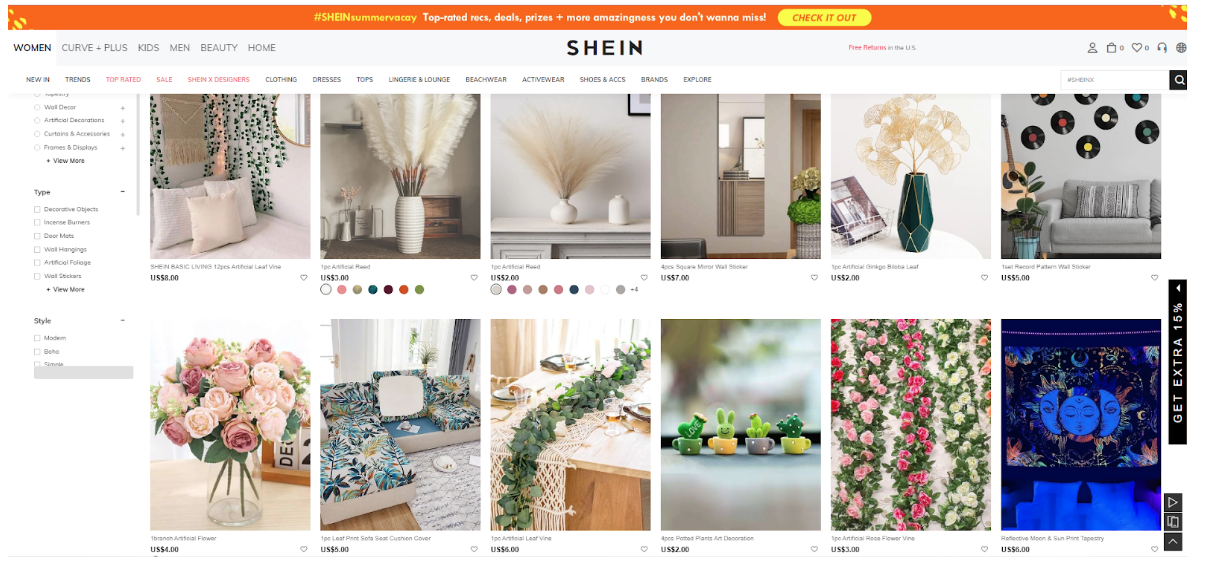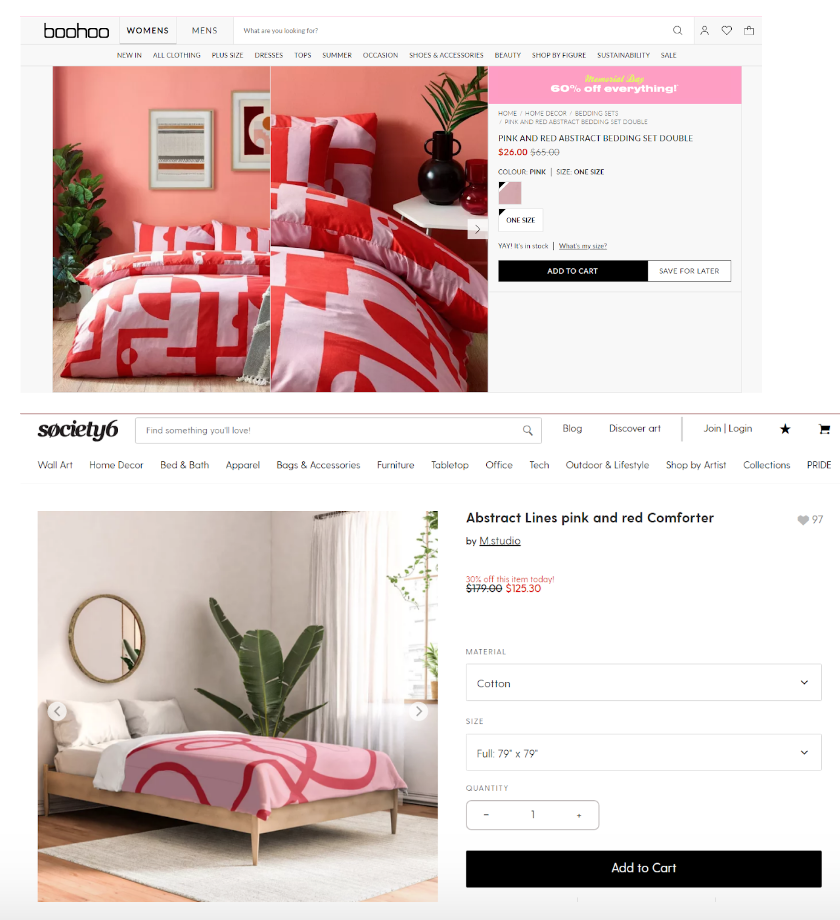By Bailey Chenevert
Same Problem, Different Name: From Fast Fashion to Fast Homeware
The pandemic found many work-from-homers turning away from fashion microtrends and embracing a uniform of business casual top and pajama pants. The conversation around fast fashion got increasingly more common and critical, and the need to step out and dress up didn’t exist during the long-term lockdown. But there’s a new conversation around overconsumption – did consumers replace wasteful wardrobes with cheap housewares?
It’s debatable whether the hit that fast fashion companies took during the pandemic will have a lasting effect on their unsustainable practices and financial prowess, but change in the way we consume is certainly coming. Sustainability influencers are rising in the ranks on Tiktok and Youtube and millennial consumers are more cautious about their purchases than ever. However, this change may not be the end of overconsumption, but instead a replacement of one fast industry for another. Now, we have fast homeware: the rampant production of cheap house goods reflecting microtrends. Sound familiar?
Fast fashion companies like Shein are leaders of industry and when their sales started dipping during the pandemic, they promptly launched new houseware lines on their websites. Dazed reported that Boohoo, Pretty Little Thing and Misguided launched their home lines within six months of each other around the end of 2020. These ultracheap goods reflected furnishing trends like fast fashion trends; they are brief, seasonal and impulsive.
A screengrab from Shein’s Home Decor section of their site shows housewares as cheap as $2, as well as discount codes for the already heavily underpriced goods.
One day, Tiktok was filled with wavy mirrors of the avant basic trend, the next it was filled with regal busts of the dark academia trend. As a result, many of us locked down in our homes bought into these trends in an effort to make being inside more welcoming and exciting when we had little opportunity to go elsewhere.

Bedding from fast fashion retailer Boohoo ($26.00)is a fifth of the price of comparable bedding from Society6 ($125.30). A good rule of thumb: if the price or deal seems too good to be true, it’s probably because it is, and someone, somewhere along the supply chain is getting majorly short-changed, a common issue with the fast-production industries that can be rife with human rights violations for workers up and down supply chains.
One of the greatest purveyors of fast homeware is not a company with the controversial reputations of Boohoo and Shein, but the beloved Target Corporation. Target Corp. saw a 23% surge in sales this last quarter and is expected to have an even bigger increase in the next. During the pandemic, Internet culture and memes pushed the idea that Target trips are escapism and purchasing their trendy products is therapy. In this way, Target became a temporary and treasured answer to life’s stressors. 
This article from postize.com compiled memes about Target for their superfans.
The belief that consumer goods are the key to happiness is not a new idea – corporations have been selling this idea since the post WWII era when the U.S. government relied on consumerism to ramp up the economy. Target seems to have taken this effective strategy to an entirely new level, with quite the group of dedicated shoppers and members singing its praises. But hey, we’re not here to dissuade consumers from Target. For what it’s worth, Target has a wealth of sustainable products and is often touted as a great place to work. At the same time, it’s important to be aware that Target also cycles products and trends that contribute to overconsumption and the rising belief that cheap, unlasting housewares can make our homes, and us, happy. This kind of thinking has led to overconsumption, which leads to tons of consumer waste, life dissatisfaction and pollution contributing to climate change. So, the shift from fast fashion to fast homeware is a good reminder for conscious consumers to be aware of shifting trends that may seem great, but are really just replacing one form of overconsumption with another.
———————————————————————————-
Bailey Chenevert is a freelance journalist and guest editorial contributor for Cluey Consumer. As a current master’s student at Appalachian State University, Bailey is researching the ways media consumption impacts our psychology. Bailey is passionate about impartial reporting on consumerism and the impacts that fashion brands have on our modern world. She has more than six years of experience in journalism as a writer, editor and director.

